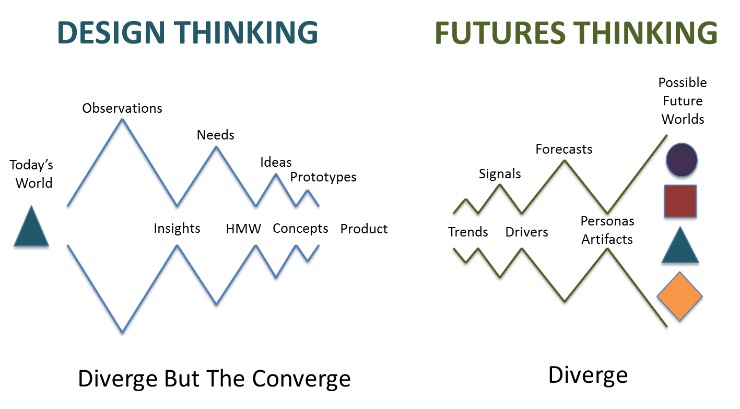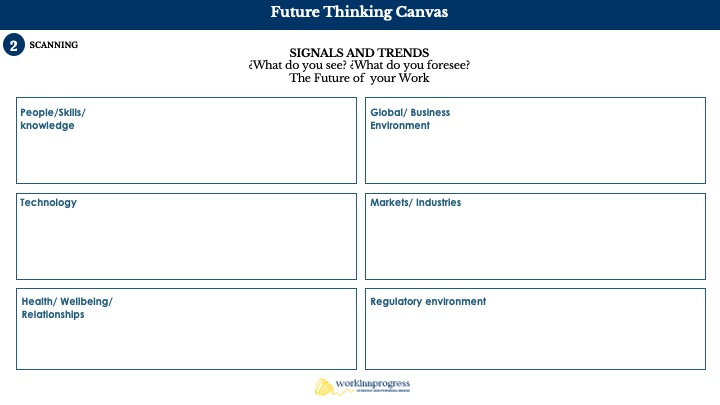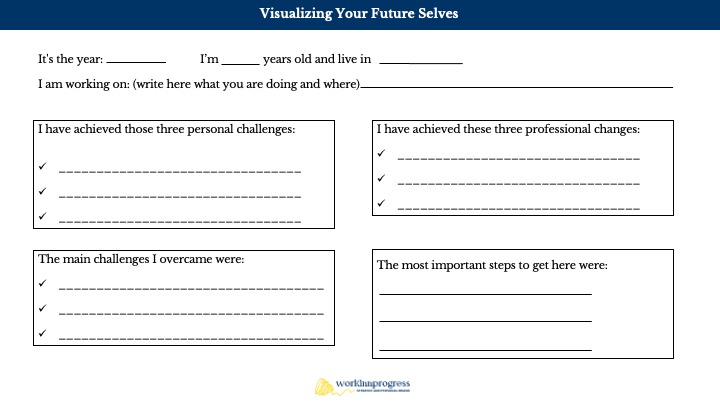Edition #4
Future Thinking Tools for Your Personal Strategy
"Where do you see yourself in 5 years?" It's a question we often face in job interviews. And, let's admit it, sometimes we tailor our response based on the position we aspire to. 😅 Does that sound familiar?
In the corporate world, an equivalent question would be: What is your company's growth strategy for the next five years? The answer isn't usually a spur-of-the-moment idea. Moreover, it wouldn't be a careless answer, as it would involve discussing purpose, vision, target markets, tactics, resources, and capabilities.
A clear vision of where you want to be in the future, be it in a year or five, is crucial for your personal growth and success. That is important not only when facing job interviews but also in life.
Without a clear goal in mind, it's easy to lose direction and wander.
En un mundo en constante cambio, la capacidad de vislumbrar y moldear nuestro propio futuro profesional se ha convertido en un super-poder. Organizaciones y marcas de todo tamaño invierten tiempo y recursos cada año para crear estrategias de crecimiento, tú también debes hacerlo.
Future Thinking or Foresight is one of the tools I use in my work with companies to start creating innovation strategies. In 2017, I had the opportunity to become certified as a Foresight Practitioner at The Institute For The Future. Since then, it has been a key practice for facing uncertainty and building paths to success.
What is Future Thinking (Foresight)?
It's a method for informed reflection on the significant changes that can occur in all areas of society and business in 5, 10, or 20 years. It's not about predicting or guessing the future but rather a systematic practice based on observation and analysis that allows:
- Asking Better Questions
- Discovering Better Answers
- Making Better Decisions
Do you believe it is important for businesses to have this capability? Consider the impact it could have if you applied it to yourself.

Future Thinking. Source: unknown
On a personal level, future thinking helps you to:
1. Challenge your own paradigms
2. Anticipate threats and uncertainties
3. Identify strategic opportunities
4. Connect long-term perspectives with actions for innovation and personal strategy today.
Here are three elements of the Future Thinking practice that you can immediately apply to your professional life:
1. FOCUSING YOUR MIND
A prepared mind is ready to think the "unthinkable."
The past is not always a predictor of the future. However, if you don't understand your past (personal and professional) and the decisions that brought you "here," you're missing valuable information to move forward and design your future.
This first step, Focusing your mind, helps you understand where you are today and what decisions brought you here. See those two previous editions of the newsletter for detailed exercises that will help you focus your mind:
Understanding your present:
https://workinnprogress.com/la-importancia-de-entender-el-presente/
Analyzing your past: Inventory of Skills
https://www.linkedin.com/posts/sandraperezbotero_the-portfolio-life-whats-in-your-circles-activity-7069813870768381952-j3uz?utm_source=share&utm_medium=member_desktop
2. SCANNING: What can you foresee on the horizon??
My favorite part of the Future Thinking practice is deliberate and constant observation of the environment. Scanning helps you identify what is on the horizon that may impact you.
In my work with companies, scanning involves observing trends and signals. Below is a framework that serves as a guide for knowing what to scan and analyze your observations.
To apply this to your professional life, think, for example, about the number of publications you find daily about the skills and abilities necessary for the future or the impact of technology on jobs. Your mission is to apply critical thinking and distill what you think is most relevant, impactful, or what you hadn't even considered.

Scanning requires discipline. To avoid confirmation bias, you must venture out of your comfort zone and observe beyond the known.
Have you ever noticed that you always hear the same news and that conversations tend to fall into familiar patterns? Scanning the environment helps you broaden your vision and strengthen your critical thinking.
Dedicate daily time to exploring new topics, watching news from different channels, and keeping up with trends and signals.
3. YOUR "FUTURE SELF": Exploring Possible Futures
Once you've completed the two previous steps, you're likely to reach moments of AHA! or Eureka moments—a new understanding, a new idea. It's here that you understand that imagining the new requires feeding your mind (Focus + Scanning); now, it's time to imagine alternative scenarios.
Let's go back to the question that triggered all this reflection: Where do you see yourself in one year or five years?
In the Foresight practice, creating Future Personas helps you gain empathy and visualize future needs and desires. I now invite you to empathize with your Future Self; this exercise enables you to create stories and visualize your future.
Imagine your future self appears in front of you.
What would they tell you about where they are today and what they're doing?
¿Qué decisiones te agradece haber tomado hoy?
What would they ask you to start doing? What would they ask you to let go of?

You can also use these additional questions as a guide to imagine possible scenarios:
What does your future look like if things don't change at all? In your industry or company, in your role.
What does your future look like if your industry/sector/company collapses or changes radically?
What would your future look like if the most extreme predictions regarding technology were to come true?
What transformations can you foresee in your immediate environment, and how can they affect you?
Creating scenarios is not about ensuring what will happen; the future is unpredictable.
However, considering different possibilities helps you prepare for any direction your professional trajectory may take. Then you gain resilience and flexibility in the face of inevitable changes.
Conclusion: Your Trajectory in Your Hands
Just as organizations use foresight to adapt to a changing world, we can use these tools to shape our professional trajectory.
In a world of constant uncertainty, the power of future thinking cannot be underestimated. By preparing our minds, scanning the horizon, and exploring alternative scenarios, we can imagine a professional path that adapts to changes and allows us to thrive in any circumstance. Like most successful organizations, a strategic vision can also shape our trajectory.
Are you ready to apply these future thinking tools and create an exceptional path for your professional development?
Comment and share!

Leave a Reply